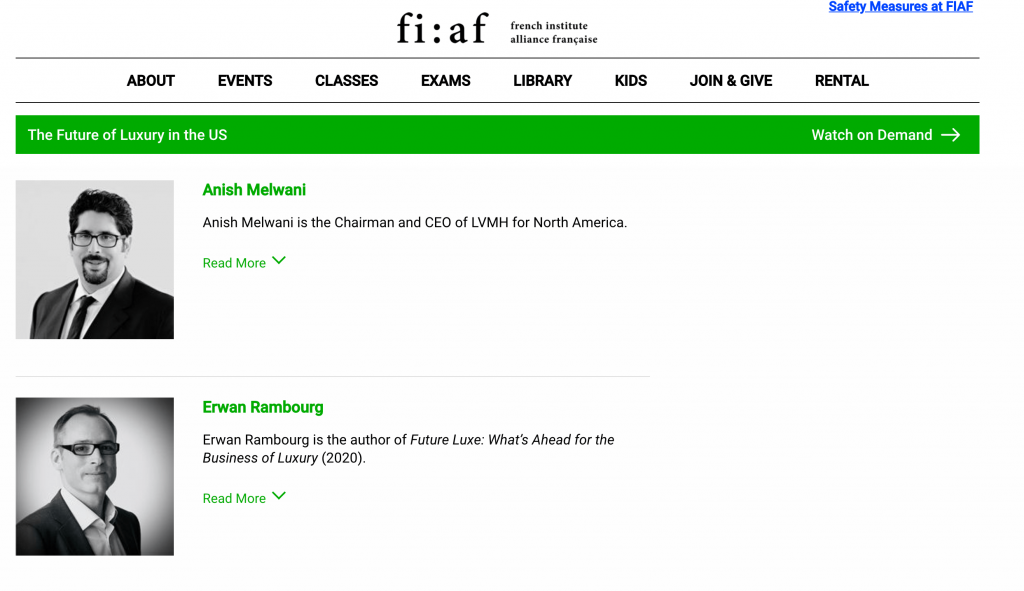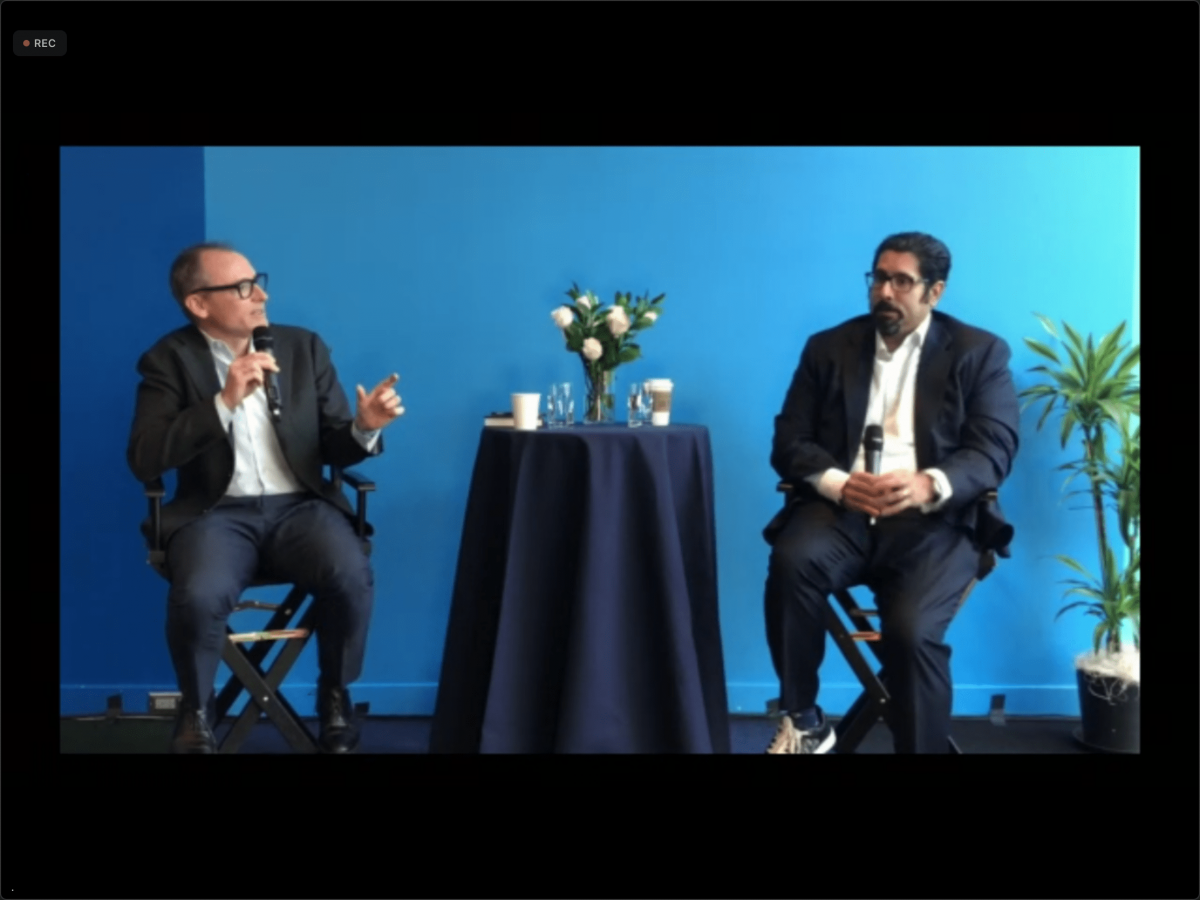Event Overview
- Title: Breakfast with Anish Melwani, Chairman & CEO of LVMH Inc (North America), In Conversation with Author Erwan Rambourg
- Date: Wednesday, November 3, 2021
- Description: In a thought-provoking conversation with author Erwan Rambourg (Future Luxe: What’s Ahead for the Business of Luxury, 2020), Anish Melwani will discuss the ever-increasing demand for iconic luxury goods in the United States.
Speakers:

Discussion
In the early part of the talk, Melwani talked about his own background. Prior to his role at LVMH, he admitted he had not worked in luxury/prestige previously.
On creativity: He talked about his first meeting with Marc Jacobs (the actual person), and being blown away by the creativity he witnessed. He said compared to his previous experience at McKinsey, the creativity at LVMH was off the charts.
On the state of Luxury in North America: More customers are now shopping from home, leading to more access to shopping in smaller markets.
On the organization of LVMH: LVMH is decentralized, focused on Maisons (houses). That’s what makes it work — or it works despite these “inefficiencies”.
Creativity and competition at LVMH: Each Maison competes with each other to drive innovation and creativity. That’s what compensates for “inefficiencies”. From a conglomerate perspective, it would make more sense to consolidate the Maisons. But from a creative perspective, it doesn’t.
Was anything missing from LVMH? The interviewer or someone in the crowd asked if LVMH was missing anything. I don’t recall how this question ended in an answer on cosmetics or skincare, but I learned that LVMH owns Fenty skincare and Fresh. He talked about the wines and spirits division (perhaps in the context of recent acquisitions). And he mentioned that LVMH had acquired hotels and other properties via Belmond.
Fenty: A few points
- Prior to this event, I did not know Fenty was part of LVMH.
- He mentioned the fact that Fenty debuted with 40 shades of foundation, which was completely unheard of at the time due to being inefficient from a sales perspective because some shades sell out more than others. However, although this is the case, the point, he said, was to show the customer that they were seen (emphasis mine).
- He also shared a comment from one of Rihanna’s Savage X Fenty shows — something about how customers can really see themselves on the stage/
- The visibility, he said, is what leads to the idea of prestige. (Or something like that.)
- Fenty came out of Kendo, an incubator in LA, specific to Sephora.
- Fenty does well in the US, which is more diverse compared to Europe.
Personal side note regarding Fenty: Although they may have released 40 shades, and many of those shades don’t sell as well as others, I have had much difficulty finding foundation shades in my skin color — for years. Colors are either too red/orange, too dark, too light…if they exist at all. They recently released a new product, Eaze Drop, a blurring skin tint. It’s extremely popular. My shade, #10, has been out of stock for MONTHS. It seems to me there is some business sense in creating these in-between shades.
Tech Stuff: NFTs and Blockchain
In response to a question about NFTs, he mentioned they have joined the Aura Blockchain Consortium, which is a blockchain for luxury brands.
As he correctly mentioned, an NFT is an address on a blockchain.
Events & Experiences
There is a high-demand for events, and demand for experiences is increasing. But what he’s not sure of is if there will be larger events in big cities, or many smaller events.
Using digital can help spread the experience around, which is kind of the traditional model. But he’s not sure what the model will be in the future, given technical advances and demand, etc.
My Questions
As I was watching online, I wasn’t able to ask questions directly. The online viewers weren’t encouraged to add questions to the Zoom Q&A. But if I had been given the opportunity to ask questions, I would’ve asked this:
- Leather/Fur: Seems like attitudes are changing about fur and meat, of which leather is a by-product. Any thoughts about that?
- 2nd-Hand Market: I didn’t have a specific question, but I was generally curious about the 2nd-hand market.
Final Thoughts
This was a really well-done, live online event. I didn’t get screenshots, but below each presenter were names and titles to describe what they did. It was really professional.
The only downside was sometimes when audience members would stand and ask questions, they sometimes begin speaking before getting the microphone. This happens at almost every event, with audience goers believing that since the people presenting and those around can hear them, the microphone picking up the event can also hear them. It cannot. Thankfully, FIAF corrected this very quickly right after one person began speaking.
I hope they produce more webinars like this again. Part of why I could not attend is because it was at 8:30AM, which is too inconvenient for me to go to and return home in time for work. Also, 8:30AM is pretty early. 🙂
Anyway, it was informative, produced very well, and very worthy of my time. I hope they do more morning series like these.
